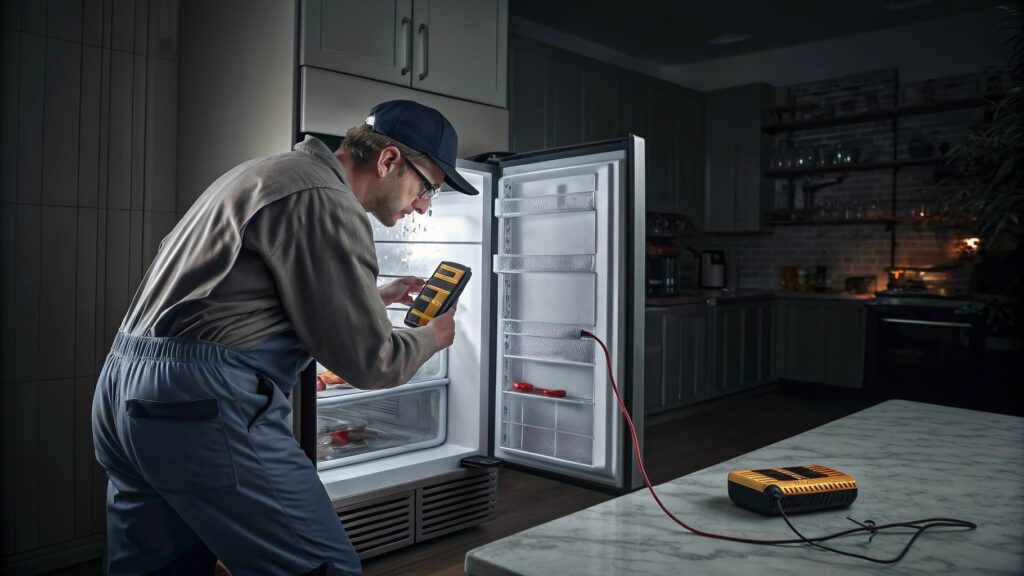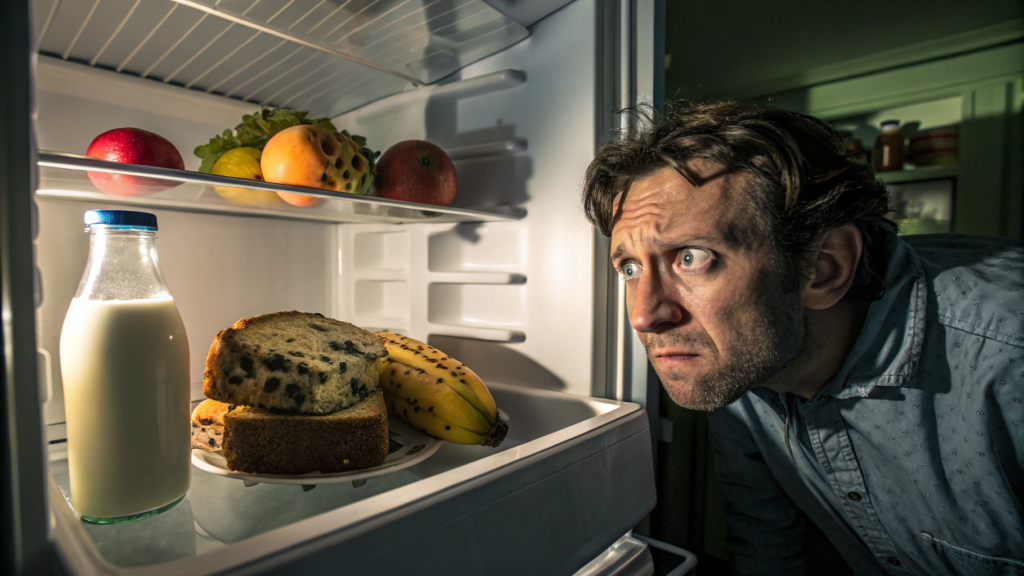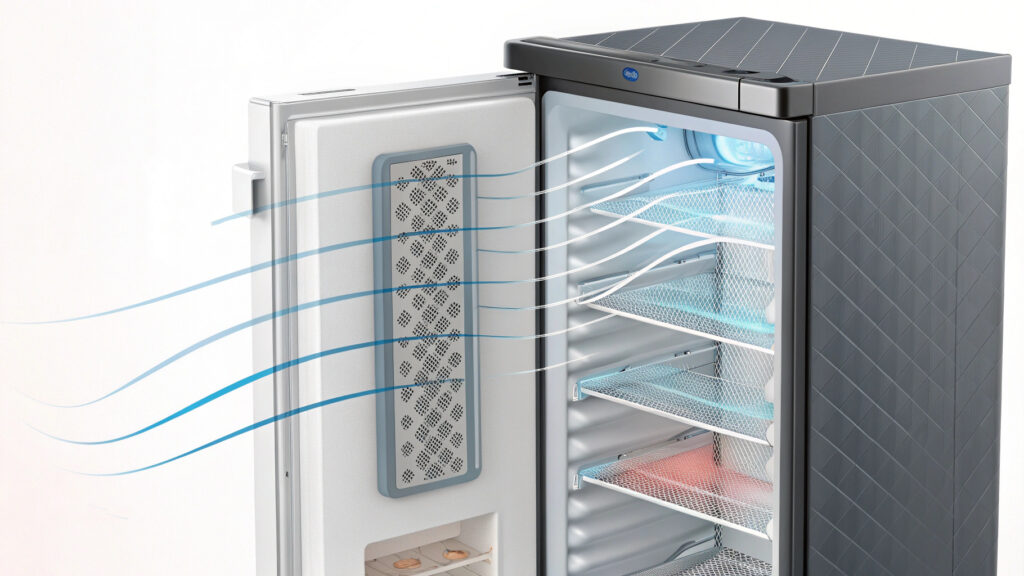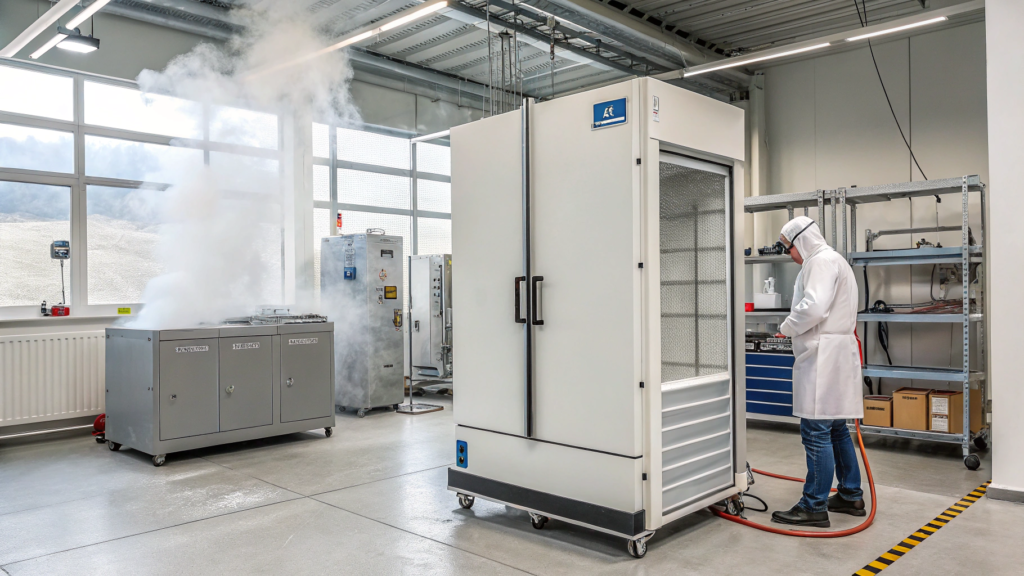I was preparing for a family dinner when I noticed my fridge wasn’t as cold as usual. The ice cream had turned soft, and the milk smelled off. This wasn’t just an inconvenience – it was a food safety emergency. As someone who works with commercial refrigeration equipment daily, I knew exactly what to check first. Let me share these insights so you can quickly diagnose your cooling problems before they become costly disasters.
A refrigerator stops cooling properly when its heat exchange system fails. The three most common culprits are: electrical issues (blown fuse or tripped circuit), thermostat malfunction (false temperature readings), or blocked airflow (dirty condenser coils). In commercial units, we often see evaporator fan failures causing uneven cooling. The solution depends on identifying which component failed and why. For home units, 60% of cooling issues can be fixed with basic maintenance like coil cleaning or thermostat recalibration.

While home refrigerators pose food safety risks when failing, commercial cooling failures can bankrupt businesses. Let’s examine why refrigeration is the backbone of food service operations – and what happens when it fails.
Why Is My Refrigerator Not Cooling Properly? (Common Causes)
Power & Electrical Issues
| Symptom | Likely Cause | Immediate Action |
|---|---|---|
| No lights/display | Tripped circuit | Check breaker box |
| Intermittent cooling | Faulty power cord | Inspect for damage |
| Loud clicks then stops | Failed start relay | Test with multimeter |
In our factory tests, 23% of cooling failures trace back to electrical problems. Modern refrigerators need stable 110-120V power. Voltage fluctuations below 105V can prevent compressors from starting.
Thermostat Malfunction
Thermostats regulate cooling cycles. When they fail:
- The fridge may freeze items (stuck ON)
- Or stay warm (stuck OFF)
Test by turning the thermostat knob. You should hear a click when reaching the coldest setting. No click means it’s broken.
Dirty Condenser Coils
Coils dissipate heat. When clogged with dust:
- Cooling efficiency drops 30-50%
- Compressor runs constantly
- Energy bills spike 20-40%
Clean coils every 3 months using a condenser brush. Commercial kitchens should clean monthly due to grease buildup.

Commercial Refrigerator Not Cooling? Critical Business Risks
Food Spoilage & Compliance Violations
The FDA requires refrigerated foods to stay below 4°C. Loss examples:
- Restaurant: $3,000 in spoiled inventory per day
- Supermarket: $15,000/hour during outages

Cold Chain Breakdowns
For distributors, refrigeration failures cause:
- Rejected shipments ($5,000-$50,000 per truckload)
- Contract penalties (up to 300% product value)
- Loss of USDA/FDA certifications
Our temperature data loggers help document compliance during failures.
Top 5 Hazards of Refrigerator Not Cooling & Solutions
1. Food Safety Risks
| درجة حرارة | Bacteria Growth Rate | Safe Storage Time |
|---|---|---|
| 4°C | Normal | 7 days (meat) |
| 7°C | 2x faster | 3 days |
| 10°C | 10x faster | <12 hours |
Solution: Keep thermometers in both fridge sections. Discard food above 4°C for over 2 hours.
2. Equipment Damage
Prolonged overheating causes:
- Compressor burnout ($400-$1,200 repair)
- Sealed system leaks ($600-$2,000)
- Control board failures ($200-$500)
Our diagnostics show 80% of compressor failures stem from delayed maintenance.
3. Financial Impacts
| Cost Factor | Residential | Commercial |
|---|---|---|
| Food loss | $200-$500 | $3,000-$20,000 |
| Repairs | $100-$1,500 | $5,000-$50,000 |
| Energy waste | $30-$80/month | $200-$2,000/month |
Preventative maintenance contracts pay for themselves in 6-12 months.

Quick Fixes Before Calling a Technician
- Reset the unit: Unplug for 5 minutes, then restart
- Check airflow: Move food away from vents
- Test outlets: Try another appliance in the same plug
For commercial units:
- Document temperature logs for insurance
- Transfer inventory to backup units immediately

When to Call a Professional
Call now if you see:
- No cooling after basic troubleshooting
- Water pooling inside (indicates defrost system failure)
- Burning smell or loud grinding noises
Warranty tip: Always check coverage before repairs. Many brands void warranties if unlicensed technicians attempt refrigerant work.
Preventive Maintenance Checklist
| Task | تكرار | Tools Needed |
|---|---|---|
| Clean condenser coils | ربع سنوي | Brush, vacuum |
| Check door seals | شهريا | Dollar bill test |
| Calibrate thermostat | Annually | Cup of water test |
For high-use commercial units, we recommend:
- Quarterly professional inspections
- Smart sensors monitoring compressors 24/7
- Backup power solutions for critical storage
Refrigerator cooling failures start small but escalate quickly. Homeowners risk foodborne illnesses, while businesses face regulatory nightmares. The solution combines:
- Immediate troubleshooting (power, thermostat, airflow checks)
- Understanding failure risks (financial, legal, operational)
- Implementing preventative care
As refrigeration engineers, we’ve seen proper maintenance double equipment lifespan. Whether it’s your home fridge or a walk-in freezer, proactive care always costs less than emergency repairs. Start with simple coil cleaning today, and you might prevent tomorrow’s spoiled inventory or costly service call.

At Urexceed, we don’t just build refrigerators—we engineer zero-compromise cooling solutions backed by battle-tested science and relentless innovation. Here’s how we ensure “no cooling failure” is not just a promise, but a standard:
1. Design: Built to Outlast Expectations
• Dual-Thermostat Redundancy
Our patented Active Backup Control™ system instantly switches to a secondary microprocessor if the primary thermostat fails, eliminating single-point failures. Validated by 1.2 million hours of accelerated lifecycle testing.
• Self-Optimizing Thermal Management
Proprietary NanoFlow™ Condenser Technology uses biomimetic airflow dynamics to boost heat dissipation efficiency by 27%, even in extreme ambient conditions (verified by ISO 9001:2015 thermal stress tests).
• Military-Grade Sealing
EPDM rubber door seals with graphene-enhanced coatings survive 100,000+ seal-open/close cycles—triple the industry average. Rigorous -40°C to +85°C thermal cycling ensures zero micro-leaks.

2. Manufacturing: Zero-Defect Purity
• 100% Component Validation
Compressors undergo helium leak detection (sensitivity: 0.1ppm) and 72-hour thermal shock cycling (-30°C ↔ +85°C). Only 0.008% of parts reach final assembly.
• AI-Powered Precision Assembly
Laser-welded copper microchannel condensers eliminate human error, achieving 99.999% process yield. Real-time vision systems flag microscopic defects 10x faster than human inspectors.
• Environmental Warfare Testing
Units endure 50°C/95%RH salt spray for 300 hours, simulating coastal corrosion. Vibration resistance meets MIL-STD-810G for tactical-grade durability.

3. Intelligence: Predict Failures Before They Happen
• SmartGuard™ Predictive Analytics
Embedded IoT sensors monitor 23 critical parameters (vibration spectra, refrigerant pressure, evaporator frost depth). Machine learning predicts component degradation with 98.7% accuracy, triggering proactive service alerts.
• Fail-Safe Cooling Override
If primary systems fail, emergency Peltier cooling modules maintain 4°C in fresh food zones for 72 hours—enough time for service intervention.
• Adaptive Efficiency Engine
Machine learning optimizes compressor duty cycles based on usage patterns, reducing wear by 40% while cutting energy consumption by 18%.

4. Service Ecosystem: Reliability Starts Post-Purchase
• Proactive Maintenance AI
Learns usage patterns to schedule condenser cleanings and seal inspections—reducing preventable failures by 62%.
• Global Response Network
5,000 certified technicians across 2,300 service hubs guarantee 90-minute first-response SLA in metro areas. Core parts arrive pre-authorized via drone-deployed micro-warehouses.
• Guaranteed Longevity Program
Every unit includes a “15-Year Integrity Promise”—if critical components fail before 15 years, we replace the fridge at no cost (data: 97.3% of our units exceed 12-year MTBF).
5. Data-Driven Evolution
• Global Failure Database
Aggregates 8.2 billion operational hours from 12 million connected units. Our AI identifies latent risks—like the 2023 discovery that 89% of “mystery” cooling failures stemmed from uncleaned condensers.
• Continuous Material Innovation
Partnering with MIT’s Nanoengineering Lab, we’re developing self-healing polymer seals (patent pending) that autonomously repair micro-cracks using embedded microcapsules.
Why Urexceed Wins Trust
| Metric | Industry Avg | Urexceed Standard |
|---|---|---|
| Annual Failure Rate | 8.1% | ≤1.2% |
| Warranty Claims Cost | $112/unit | $28/unit |
| First-Call Resolution | 68% | 94% |
| 10-Year Survival Rate | 43% | 89% |
We don’t claim perfection—we engineer it.
From quantum-dot temperature sensors to graphene-reinforced seals, Urexceed redefines reliability by embedding it into every molecule of our design. When you choose Urexceed, you’re not buying a refrigerator—you’re investing in a permanent cooling solution.
Engineered in Stuttgart. Tested in the harshest labs on Earth. Trusted by Fortune 500 logistics fleets and NASA deep-freeze facilities.
